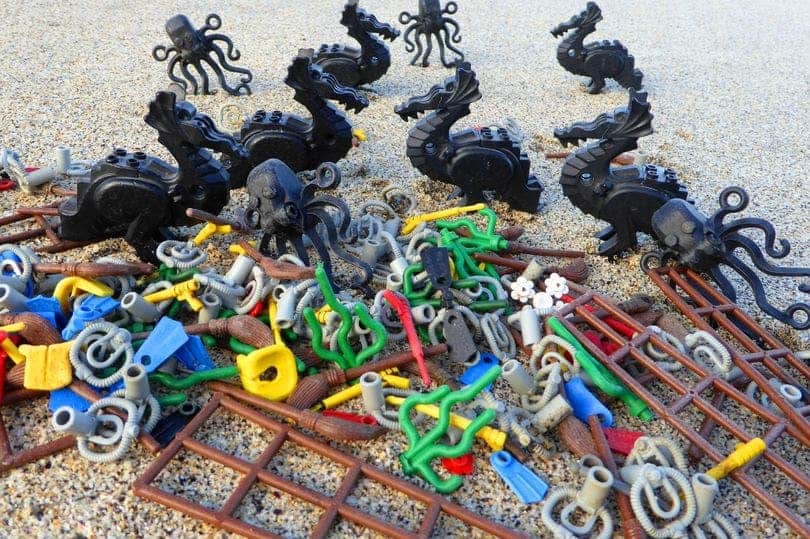
On February 13, 1997, stormy weather caused a Tokio Express container ship to tilt more than 45 degrees, causing 62 containers to go overboard. One of these containers carried 4.8 million pieces of LEGO. More than 23 years later, LEGO bricks are still washing up on Cornish coastlines, in southwest England.
According to Delia Webb of the Cornish Plastic Pollution Coalition (CPPC), volunteer beach cleaner are regularly finding LEGOs to this day, which is a “sobering reminder of the enduring nature of plastics in our environment”.
“We are still finding Lego pieces remarkably frequently but we get on and pick up and clear whatever is on the beach. Everyone wants to find a Lego dragon but we would much rather go to the beach and see a clean beach,” Webb told Cornwall Live.
“There is such a variety of plastics on the beaches – you also see tiny little micro-plastics which are easily ingested by sea creatures. Then we are running into how plastics get into the food chain.”

In 2019, the shipping industry transported 226 million containers, whose cargo was valued at more than $4 trillion. Most of the time, these containers reach their destination safely. However, even with proper packing and stowage, some containers will inevitably become lost at sea.


The World Shipping Council estimates that between 2008 and 2019 a total of 1,382 containers were lost at sea each year, on average. The most recent years, between 2014 and 2016, saw a decline in the number of lost containers, representing close to 50% reduction.
However, containers continue to be lost due to stowage, lashing, and misdeclaration issues. Severe weather, ship groundings, structural failures, and ship collisions are also a major cause of container losses at sea.
Many of these compromised containers carry plastics and other extremely durable goods and items that can circulate through the ocean for decades, as LEGOs on Cornish beaches clearly illustrate.


